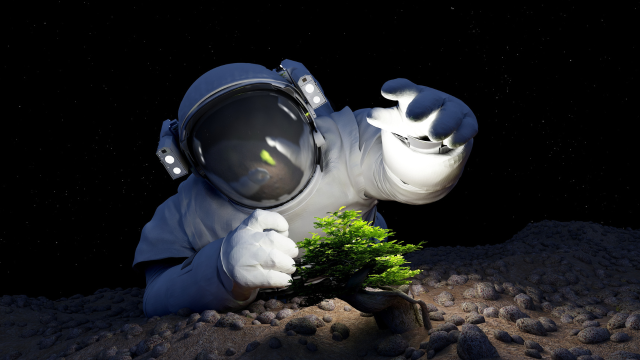The Australian National University (ANU) and Aussie startup Lunaria One are teaming up to grow plants on the moon together, as early as 2025.
Lunaria One’s Australian Lunar Experiment Promoting Horiculture is all about gettings plants to grow in space, for food, medicine and oxygen production. The problem, as you can gather, is that the Moon is a barren desert of an environment. There’s no life there, only dust, rocks and water.
The ANU is coming in as a collaborator to “lend its unique expertise in plant biology”, according to the press release. Plant growth on the moon was first tackled by China back in 2019, and earlier this year it was revealed that plants could grow in Lunar soil, but this experiment seeks to inform food strategies back on Earth.
“Space is an exceptional testing ground for how to propagate plants in the most extreme of environments,” said Professor Caitlin Byrt from ANU. She’s also an advisor for Lunaria One.
“This project is important for developing propagation systems relevant to challenges here on Earth. This includes the creation of controlled environments that enable communities to rapidly propagate plants after natural or climate-related disasters.
“If you can create a system for growing plants on the moon, then you can create a system for growing food in some of the most challenging environments on Earth.”
What plants will Lunaria One and the ANU grow on the moon? They’re still deciding, but one of the frontrunners under consideration is the Tripogon loliiformis, an Australian form of grass that can handle harsh conditions and survive for months without water.
Whatever plants are selected, they will travel aboard SpaceIL’s Beresheet 2 in a special capsule. The plants will be transported to the moon in a dehydrated, dormant state and will become reactivated upon watering.
The ship will blast off in 2025. Upon arrival, images and videos will be beamed back to Earth over a 72-hour period and will be publicly accessible.
“The key to this mission is to get humans involved and to give them a say in how we get there. The ALEPH project aims to open up the science and engineering behind growing life on the moon so that anyone can be involved,” added Lauren Fell, the director of Lunaria One.
You can read the collaboration announcement on the ANU website.
